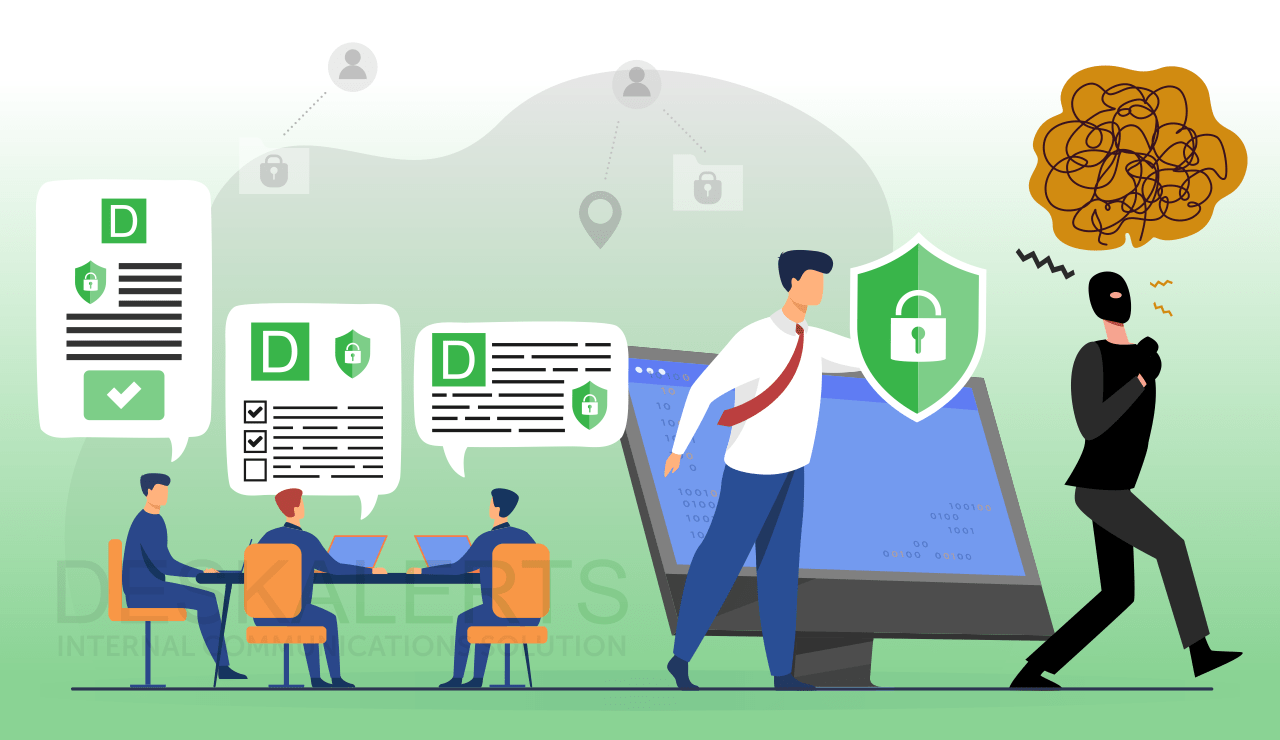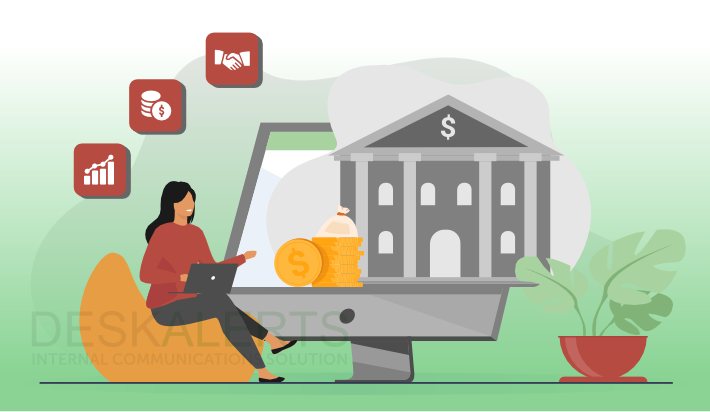4 min read
HR Annual Planning Calendar 2024
It’s time to start thinking about your Human Resources calendar for the next 12 months and beyond with a new year almost upon us.
 Every organization needs to ensure cybersecurity awareness among employees to help protect data and systems. It’s important that employees understand and are mindful of the day to day situations that could actually cause harm to the company if they are not careful.
Every organization needs to ensure cybersecurity awareness among employees to help protect data and systems. It’s important that employees understand and are mindful of the day to day situations that could actually cause harm to the company if they are not careful.
Risks in the cyber landscape include phishing, hacking, identity theft, ransomware, viruses and more. The threat landscape is always changing and becoming more sophisticated and sadly employees are often the weakest link when it comes to keeping data secure - they are not always up-to-date with what’s new in cyber security.
Business leaders need to be responsible to ensure that their employees understand risks and their own personal cybersecurity responsibilities and obligations. It goes well beyond sending a one-off cybersecurity awareness email to employees. Cyber threats are here to stay, so the future of cybersecurity involves ongoing, constant vigilance.
Creating and delivering a comprehensive cybersecurity awareness campaign that keeps abreast of cybersecurity trends can help to keep this issue front-of-mind for staff in your company.
Different organizations have different needs. There are different threats across industries, and the level of knowledge of cyber security among employees can also vary differently. There’s no one-size-fits-all approach to delivering a cybersecurity awareness campaign, but the following steps will provide a solid foundation to ensure your employees know what’s new in cyber security.
The first step is to determine what you want to achieve and define your cyber security campaign’s scope based on the specific needs of your organization, cybersecurity industry trends and the future of cybersecurity for your business. This should be set out in a plan that you can take action and measure.
It’s critical to have agreement about the importance of cybersecurity from the top down to every level of management within the organization so that you can influence attitudes and behaviors appropriately. This is important for ensuring the future of cybersecurity in your organization.

It is important to have clear and easy to understand policies and procedures in place around cyber security that set out expectations for employees and their obligations to use computer systems appropriately to keep data safe. Having employees acknowledge this helps to keep them accountable.
Understanding your goals and specific needs, you can then tailor your security awareness campaign to suit your objectives: what are the risks you need to communicate and educate about? What are the current cybersecurity trends? Providing the right information to your employees about the common risks and steps that they can take to detect and mitigate risk will help to protect your business.
Having an ongoing cybersecurity awareness campaign means that you can continuously deliver information to employees about different cybersecurity topics. For example, one month you may do a topic on password protocols, the next it may be broadly about what’s new in cyber security or on other cybersecurity topics such as phishing or ransomware.
Regularly testing employees’ knowledge about cyber security and information security trends can help you to determine if there are any weaknesses or gaps in their knowledge that need to be addressed through the development of any additional educational materials.
Best practice in internal communications includes using different delivery channels to communicate the same message. This is based on research that shows that you often need to deliver the same information several times before it resonates and sticks with employees. It also reflects that different people have different preferences and styles when it comes to receiving information.
Cyber security awareness needs to begin from the very first day an employee begins with your organization. By including it in your employee onboarding process you can ensure that all new staff have a consistent level of education and awareness, and you can also bring your brand new employees up to speed with the rest of the employee cohort.
The one thing we know about the future of cybersecurity is that there will always be new and sophisticated ways that cyber criminals will try to exploit vulnerabilities and attack businesses. It’s crucial to stay up-to-date with emerging cybersecurity trends and threats and introduce them to your employees where appropriate so that you can be on the front-foot and not taken by surprise.
Read more: Corporate Password Policy - 10 Rules to Ensure Cybersecurity in 2024
There’s always room for improvement, but you won’t know what to improve if you don’t have metrics that you can measure. Have you found deficiencies? Has your employees’ knowledge improved? When you have data, you can use it to inform people about any further cyber security initiatives. This helps you to map out the future of cybersecurity measures in your organization.
DeskAlerts is an internal communication software system that is versatile and can help organizations to overcome many different communication challenges, including improving cyber security awareness and keeping people aware of cybersecurity trends.
The system features many different communication tools and channels and is designed to grab attention and cut through the digital noise of the modern workplace.
DeskAlerts is a key tool in managing the future of cybersecurity awareness and will enable you to:
DeskAlerts messages can be scheduled ahead of time, which is great when you are creating an ongoing campaign. You can also send messages to specific audience segments, tailored to their needs. Messages can also be sent in different languages and to different time zones.
***
Data and systems security is one of the biggest challenges for business today, particularly as the threat landscape and cybersecurity trends change all the time . Get in touch with our team today to find out how DeskAlerts can help you educate and inform your employees about cyber threats and keep ahead of information security trends.
A cyber security campaign is an awareness effort directed at a specific group of individuals, such as employees, providing information about cyber threats with the aim of increasing understanding of the risks so that they can take appropriate steps to avoid them.
There are five main types of cyber security to be aware of:
The main ways to promote cybersecurity awareness include:
The 10 key steps in cyber security are:
The 90/10 rule of cyber security is a concept that 90% of cyber security activities in an organization focus on policies and procedures while the other 10% is about having the right technology in place. This works on the premise that most cyber security breaches occur because of the human factor involved and there is a need to focus on mitigating this risk by providing employees with guidance and education.
It’s a good idea to create a checklist to follow to ensure that your organization has all its bases covered when it comes to the future of cybersecurity for your team. Here are 10 key points:
The top four cybersecurity strategies to implement to ensure a strong foundation for cyber security are are:
Employee training and awareness - educating staff about cybersecurity trends, risks and best practices can prevent many common security breaches.

4 min read
It’s time to start thinking about your Human Resources calendar for the next 12 months and beyond with a new year almost upon us.

6 min read

6 min read
In today's rapidly evolving financial landscape, banks must stay ahead of industry changes, regulatory updates, and technological advancements....